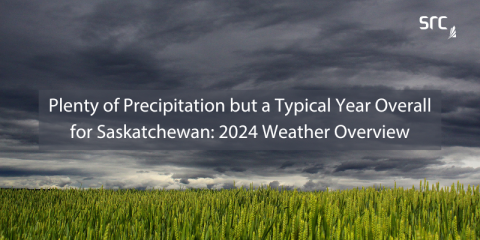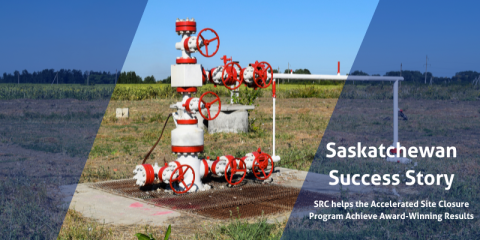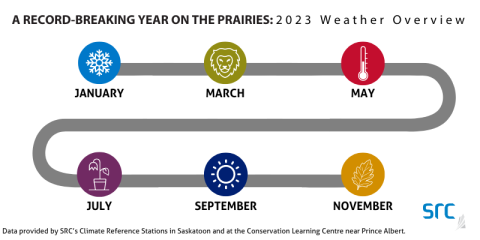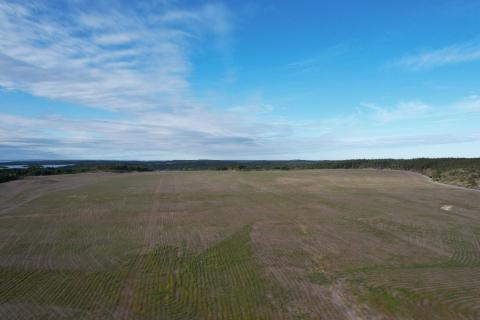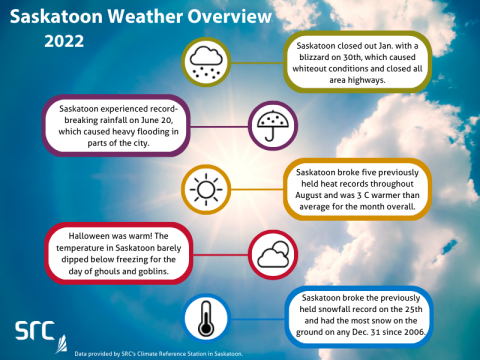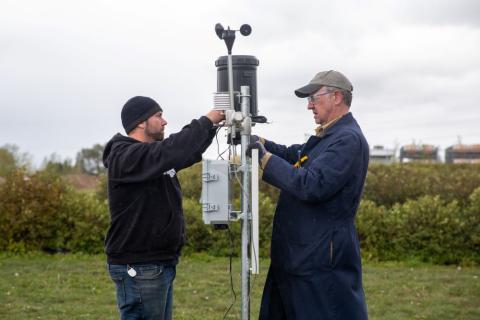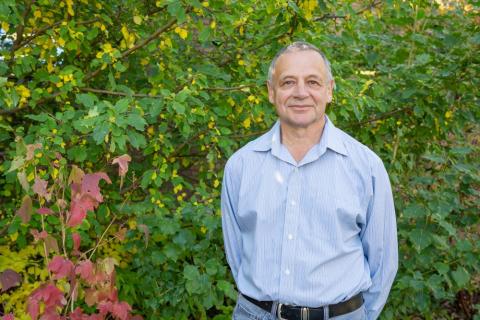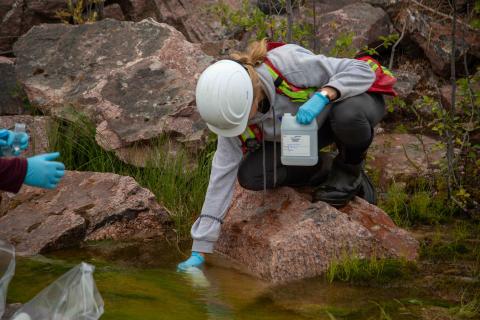Inside SRC
After a few years of extreme weather and record-breaking climate events, Saskatchewan’s weather took a more “average” turn in 2024. But there were still some new records achieved based on data from SRC’s Climate Reference Stations in Saskatoon and at the Conservation Learning Centre (CLC) near Prince Albert.
Lucinda brings her deep understanding of all facets of mining operations and social sciences to her role as Director of Business Development at SRC, working with diverse communities and companies both local and international. Lucinda understands that strong working relationships are the key to business development, especially when providing services to clients.
During a time when a global pandemic brought industries across the world to a standstill, shuttering businesses and stymying job growth, the Government of Saskatchewan initiated a program to help get people back to work.
With several longstanding climate records shattered in 2023, Saskatchewan’s weather was right at home in a year full of impactful events. This year, SRC's Climate Reference Station (CRS) located in Saskatoon, Saskatchewan, logged record amounts of bright sunshine, record daily high temperatures and below average precipitation making 2023 the fifth driest year on record.
Remediation efforts at the former Gunnar Mine and Mill Site reached a new milestone last spring—with the first stage of revegetation coming to fruition. Learn how this long-abandoned uranium mine and mill has undergone a large environmental transformation over the past decade.
2022 will be remembered for many reasons. We experienced the world beginning to reopen, but as per usual for Saskatoon, we also experienced record-setting weather. Follow along as we recap the weather Saskatoon experienced throughout 2022.
SRC's Climate Services team installed a weather station at Black Fox Farm and Distillery, which provides Black Fox's owners accurate weather data for their business. Learn more about the weather station and SRC's nearly sixty-year history tracking Saskatchewan's changing climate.
Skye Muirhead is the Operations Lead for SRC’s Environmental Remediation team. Learn more about Muirhead's career and work at SRC as she and her team take on the complex task of remediating abandoned uranium mine and mill sites in northern Saskatchewan.
Alexey Klyashtorin is a world-renowned expert on nuclear and environmental remediation. He works on SRC's Project CLEANS team where he applies his industrial and academic experience to remediating abandoned uranium mine and mill sites in northern Saskatchewan. Read on.
Water is a reactive and dynamic medium. Although a sample bottle filled with water may look quite stable, as soon as that sample is taken, subtle changes can begin to take place. Read more to learn why it's important to follow the sampling and preservation guidelines provided by your laboratory.

